What is naive art by gina gallery
Naïve art is any form of visual art that is created by a person who lacks the formal education and training that a professional artist undergoes (in anatomy, art history, technique, perspective, ways of seeing). When this aesthetic is emulated by a trained artist, the result is sometimes called primitivism, pseudo-naïve art, or faux naïve art. Unlike folk art, naïve art does not necessarily evidence a distinct cultural context or tradition. Naïve art is recognized, and often imitated, for its childlike simplicity and frankness. Paintings of this kind typically have a flat rendering style with a rudimentary expression of perspective.
Contents
- What is naive art by gina gallery
- Characteristics
- Movements
- Earth Group
- Hlebine School
- 18th century
- 19th century
- 20th century
- Museums and galleries
- Associations
- References
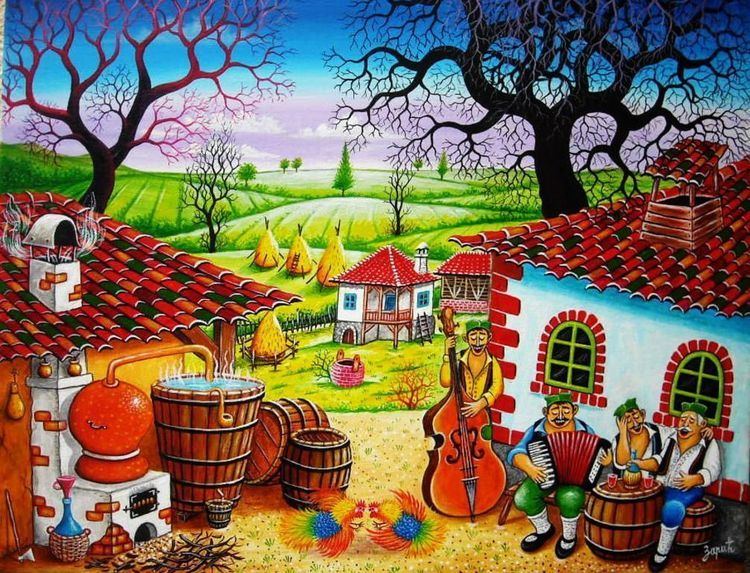
One particularly influential painter of "naïve art" was Henri Rousseau (1844–1910), a French Post-Impressionist who was discovered by Pablo Picasso.
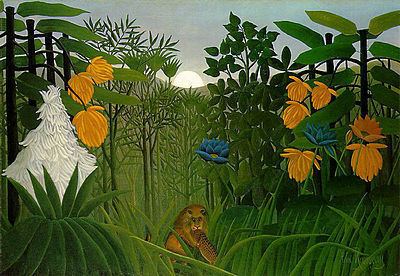
Characteristics
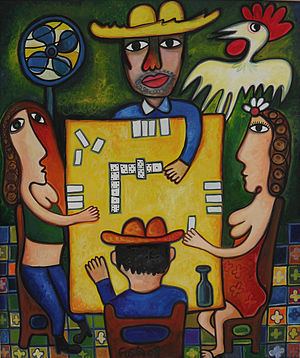
Naïve art is often seen as outsider art that is by someone without formal (or little) training or degree. While this was true before the twentieth century, there are now academies for naïve art. Naïve art is now a fully recognized art genre, represented in art galleries worldwide.
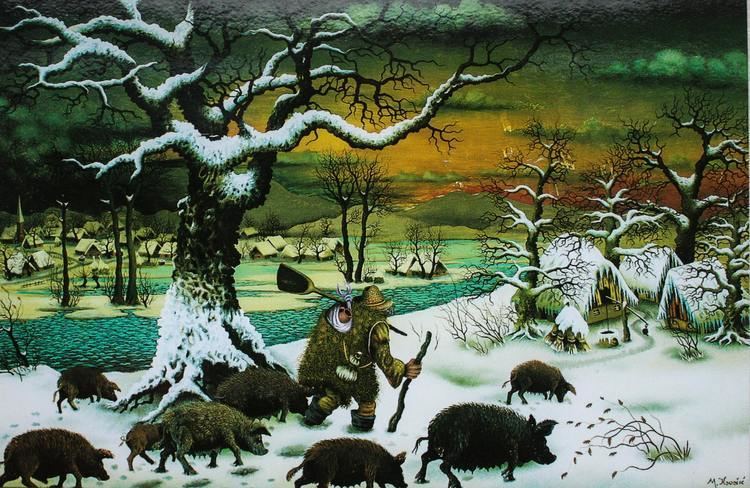
The characteristics of naïve art are an awkward relationship to the formal qualities of painting, especially not respecting the three rules of the perspective (such as defined by the Progressive Painters of the Renaissance):
- Decrease of the size of objects proportionally with distance,
- Muting of colors with distance,
- Decrease of the precision of details with distance,
The results are:
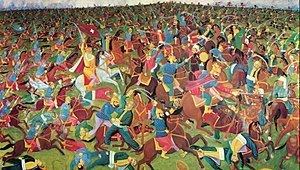
- Effects of perspective geometrically erroneous (awkward aspect of the works, children's drawings look, or medieval painting look, but the comparison stops there)
- Strong use of pattern, unrefined color on all the plans of the composition, without enfeeblement in the background,
- An equal accuracy brought to details, including those of the background which should be shaded off.
Simplicity rather than subtlety are all supposed markers of naïve art. It has, however, become such a popular and recognizable style that many examples could be called pseudo-naïve.
Whereas naïve art ideally describes the work of an artist who did not receive formal education in an art school or academy, for example Henri Rousseau or Alfred Wallis, 'pseudo naïve' or 'faux naïve' art describes the work of an artist working in a more imitative or self-conscious mode and whose work can be seen as more imitative than original.
Strict naïvety is unlikely to be found in contemporary artists, given the expansion of Autodidactism as a form of education in modern times. Naïve categorizations are not always welcome by living artists, but this is likely to change as dignifying signals are known. Museums devoted to naïve art now exist in Kecskemét, Hungary; Riga, Latvia; Jaen, Spain; Rio de Janeiro, Brasil; Vicq France and Paris. Examples of English-speaking living artists who acknowledge their naïve style are: Gary Bunt, Lyle Carbajal, Jonathan Kis-Lev, Gabe Langholtz, Gigi Mills, Barbara Olsen, Paine Proffitt, and Alain Thomas.
"Primitive art" is another term often applied to art by those without formal training, but is historically more often applied to work from certain cultures that have been judged socially or technologically "primitive" by Western academia, such as Native American, subsaharan African or Pacific Island art (see Tribal art). This is distinguished from the self-conscious, "primitive" inspired movement primitivism. Another term related to (but not completely synonymous with) naïve art is folk art.
There also exist the terms "naïvism" and "primitivism" which are usually applied to professional painters working in the style of naïve art (like Paul Gauguin, Mikhail Larionov, Paul Klee).
Movements
Nobody knows exactly when the first naive artists appeared on the scene, as from the very first manifestations of art right up to the days of the "Modern Classic", naive artists quite unconsciously bequeathed us unmistakable signs of their creative activity. At all events, naive art can be regarded as having occupied an "official" position in the annals of twentieth-century art since - at the very latest - the publication of the Der Blaue Reiter, an almanac in 1912. Wassily Kandinsky and Franz Marc, who brought out the almanac, presented 6 reproductions of paintings by le Douanier' Rousseau (Henri Rousseau), comparing them with other pictorial examples. However, most experts agree that the year that naive art was "discovered" was 1885, when the painter Paul Signac became aware of the talents of Henri Rousseau and set about organizing exhibitions of his work in a number of prestigious galleries.
Earth Group
The Earth Group (Grupa Zemlja) were Croatian artists, architects and intellectuals active in Zagreb from 1929 to 1935. The group was Marxist in orientation and was partly modelled on "Neue Sachlichkeit", leading to more stylized forms, and the emergence of Naive painting. The group included the painters Krsto Hegedušić, Edo Kovačević, Omer Mujadžić, Kamilo Ružička, Ivan Tabaković, and Oton Postružnik, the sculptors Antun Augustinčić, Frano Kršinić, and the architect Drago Ibler. The Earth group searched for answers to social issues. Their program emphasised the importance of independent creative expression, and opposed the uncritical copying of foreign styles. Rather than producing art for art's sake, they felt it ought to reflect the reality of life and the needs of the modern community. Activities at the group's exhibitions were increasingly provocative to the government of the day, and in 1935 the group was banned.
Hlebine School
A term applied to Yugoslav (Croatian) naive painters working in or around the village of Hlebine, near the Hungarian border, from about 1930. At this time, according to the World Encyclopedia of Naive Art (1984), the village amounted to little more than ‘a few muddy winding streets and one-storey houses’, but it produced such a remarkable crop of artists that it became virtually synonymous with Yugoslav naive painting.
Hlebine is a small picturesque municipality in the North of Croatia that in 1920s became a setting against which a group of self-taught peasants began to develop a unique and somewhat revolutionary style of painting. This was instigated by leading intellectuals of the time such as the poet Antun Gustav Matos and the biggest name in Croatian literature, Miroslav Krleza, who called for an individual national artistic style that would be independent from Western influences. These ideas were picked up by a celebrated artist from Hlebine – Krsto Hegedusic and he went on to found the Hlebine School of Art in 1930 in search of national “rural artistic expression”.
Ivan Generalić was the first master of the Hlebine School, and the first to develop a distinctive personal style, achieving a high standard in his art.
After the Second World War, the next generation of Hlebine painters tended to focus more on stylized depictions of country life taken from imagination. Generalić continued to be the dominant figure, and encouraged younger artists, including his son Josip Generalić.
The Hlebine school became a worldwide phenomenon with the 1952 Venice Biennale and exhibitions in Brazil and Brussels.
Some of the best known naive artists are Dragan Gaži, Ivan Generalić, Josip Generalić, Krsto Hegedušić, Mijo Kovačić, Ivan Lacković-Croata, Franjo Mraz, Ivan Večenaj and Mirko Virius.
